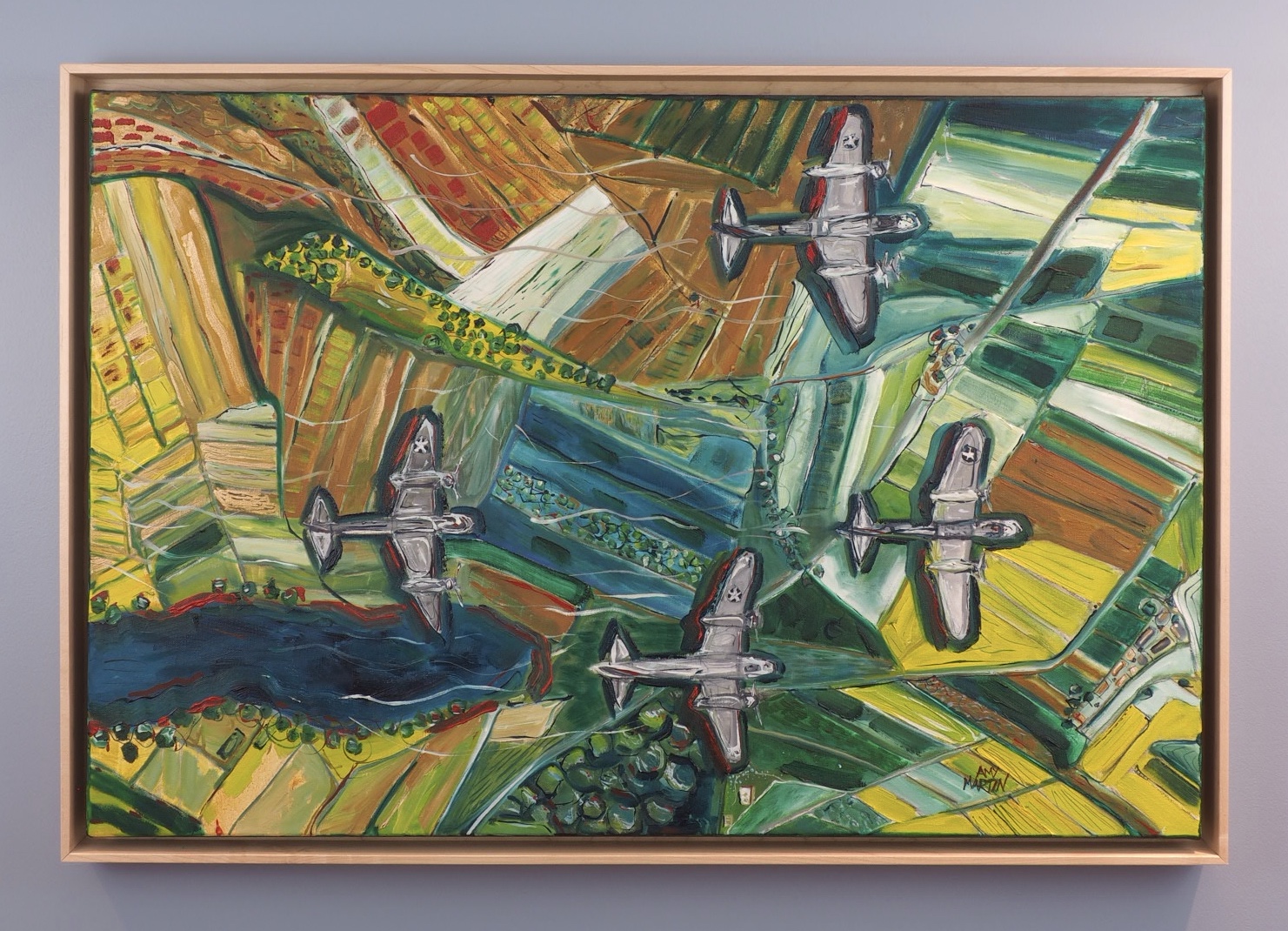B-26 Marauders
B-26 Marauders
24” x 36 “ Oil on canvas in wooden floating frame.
“In 1939, the Martin B-26 Marauder was built in parallel with North American B-25 Mitchell, but while B-25 was docile handling airplane, the B-26 was nothing of the kind. It was built for speed and was a highly strung, unforgiving airplane, that needed to be tamed by the most experienced pilots. At 56 lbs/ft2, it had the highest wing loading of any American World War II airplane—40% higher than that of the B-25.1 While such wing loading is now considered standard operating procedure, World War II aircraft lacked the sophisticated automatic braking and propeller feathering systems currently available today, thereby making accidents more likely. It was rushed into service, overloaded with equipment without increasing power and put into low level ground attack missions it was not designed for. It experienced engine and propeller failures beyond Martin’s control, which contributed to its poor reputation. When used as a medium level bomber, which it was designed for, its performance greatly improved. After teething problems with mechanical systems were worked out and pilots were better trained, its loss rate diminished and was comparable to the minimum rates of other aircraft in service. It was created by engineer Peyton M. Magruder of the Glenn L. Martin Company and it was designed with a near perfect streamlined fuselage, except for the stepped windshield. It was given a short wing to give a higher maximum speed, but at the expense of a slower landing approach and durability in combat. For the unwary pilot, it could be a deathtrap. In the rush to gear up for the war, it was hastily entered into service and was flown by inexperienced pilots. It was nicknamed the Widow Maker, the Baltimore Whore, and the Flying Prostitute (because it had no visible means of support)”- Aviation-history.com
